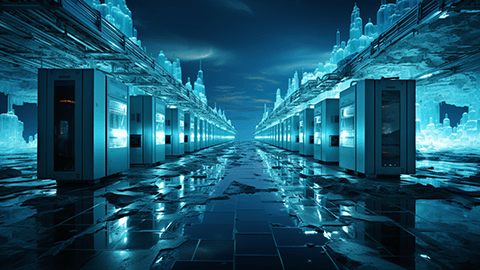
How to Set Up an OpenVPN Server on Ubuntu 22.04
July 3, 2023
Web Application Penetration Testing: A Comprehensive Guide
July 3, 2023Why Does a Server Room Need to Be Cold?

In the world of information technology, server rooms are the heart of operations. They house the critical data and applications that businesses rely on to function. However, these rooms require a specific environment to operate optimally, and one of the most crucial aspects of this environment is temperature. But why does a server room need to be cold? Let’s delve into the reasons.
Heat Generation and Its Impact:
Servers, like any other electronic devices, generate heat when they are in operation. This heat production is a byproduct of the electrical energy used to power the servers. When multiple servers are running simultaneously in a confined space, the heat generated can quickly accumulate, leading to a significant rise in temperature.
Excessive heat in a server room can have detrimental effects. It can cause servers to overheat, leading to hardware failure and data loss. Additionally, high temperatures can reduce the lifespan of the equipment, leading to more frequent replacements and increased costs.
The Role of Cooling:
To mitigate the risks associated with heat generation, server rooms need to be kept cold. Cooling systems, such as air conditioning units or liquid cooling systems, are used to maintain a lower temperature in the server room. These systems work by absorbing the heat produced by the servers and expelling it outside the room, thereby maintaining a stable, cool environment.
The recommended temperature for a server room is typically between 20-25 degrees Celsius (68-77 degrees Fahrenheit). Maintaining this temperature range ensures that the servers can operate efficiently without the risk of overheating.
Energy Efficiency:
While keeping the server room cold is essential, it’s also important to consider energy efficiency. Cooling systems can consume a significant amount of energy, so it’s crucial to use energy-efficient solutions. This can include using energy-efficient servers, optimizing the layout of the server room for better airflow, and using smart cooling systems that adjust the cooling based on the server room’s heat load.
Conclusion:
In conclusion, the need for a cold server room is driven by the necessity to maintain optimal server performance, prevent hardware failure, and extend the lifespan of the equipment. While it does pose challenges in terms of energy consumption, with the right strategies and technologies, businesses can maintain a cool server room environment without compromising on energy efficiency. Therefore, temperature management in server rooms is not just a recommendation, but a requirement for the smooth and efficient operation of IT infrastructure.

